Leslie Martinez
The Fault of Formation
16 Nov 2023 - 08 Apr 2024
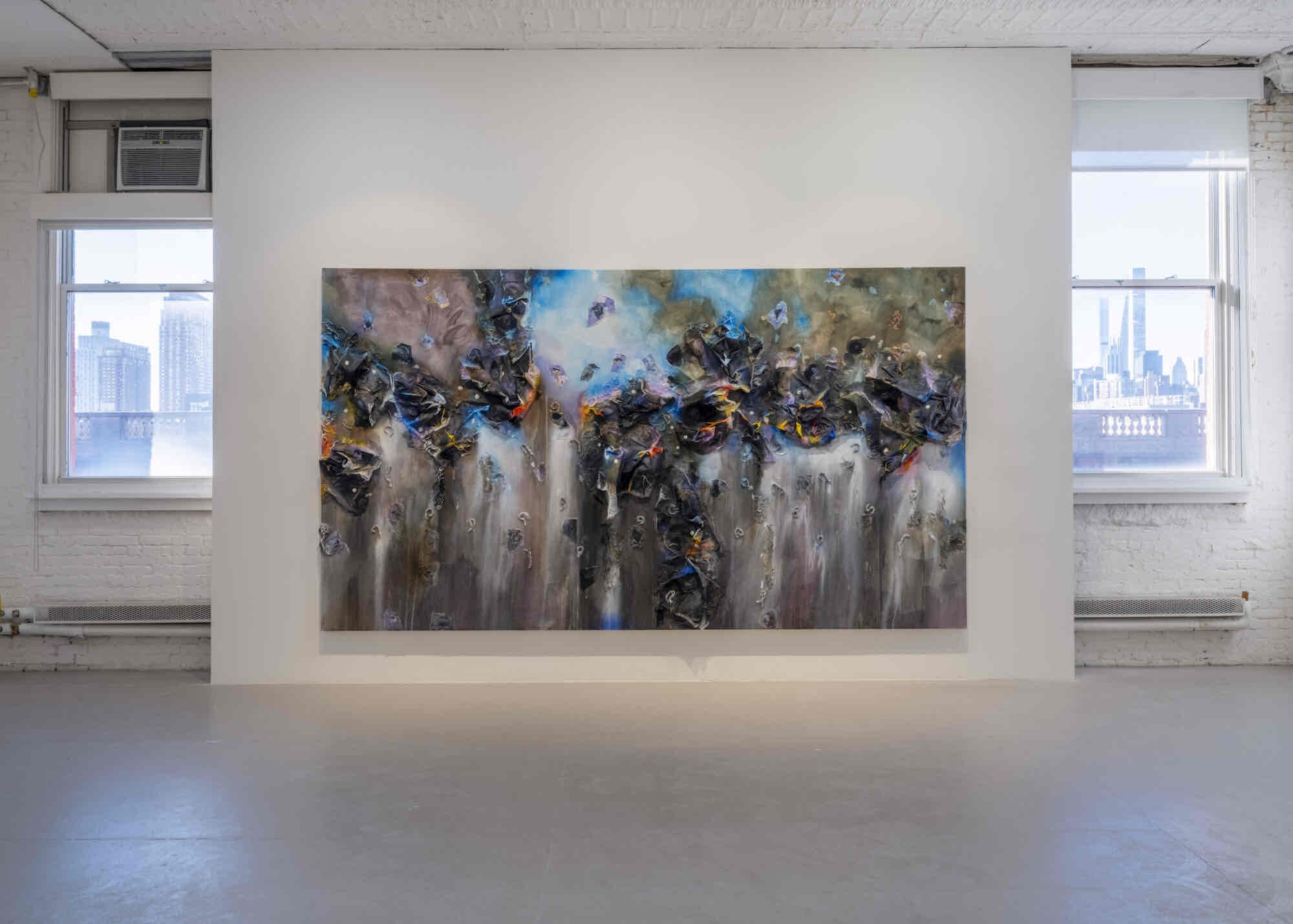
Leslie Martinez. Out of the Gap Where Darkness Echos, Mustangs Took Off Running. 2023. Acrylic, sumi ink, modeling paste, used studio rags, canvas scraps, used studio clothing, plastic film stuffing, polyester sewing threads, paper fragments, mop head fibers, paint chips, buckwheat hull, iron silicate, pumice, and glass beads on canvas. Image courtesy MoMA PS1. Photo: Kris Graves
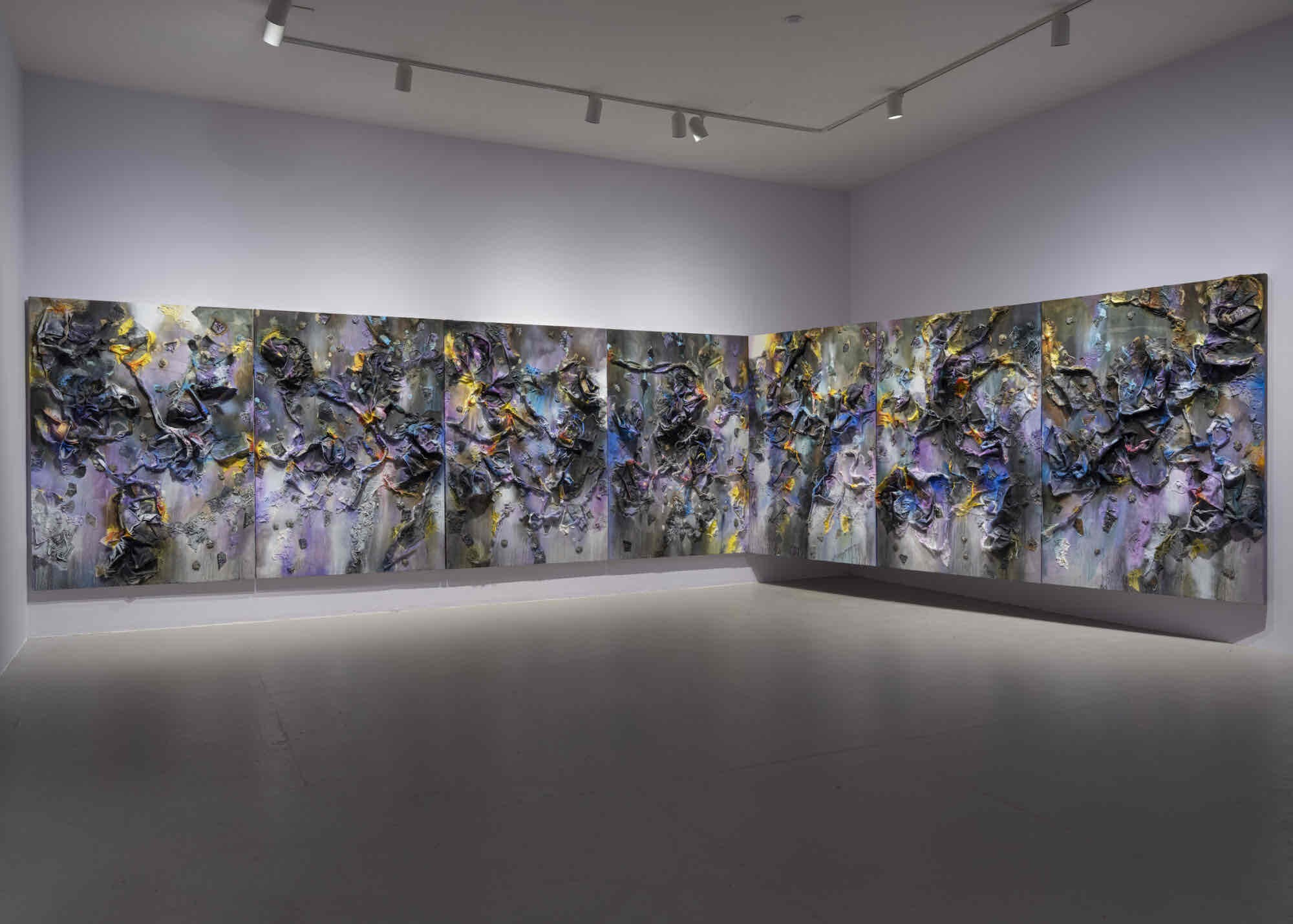
Leslie Martinez. The Reconstitution of Rejected and Refracted Voids. 2023. Acrylic, sumi ink, used studio rags, canvas scraps, used studio clothing, plastic film stuffing, polyester sewing threads, paper fragments, mylar balloons, iron silicate, iridescent cellophane, crushed charcoal, paint chips, saw dust, pumice, modeling paste, mica flakes, mica powder, and iron oxide on canvas. Installation view, Leslie Martinez: The Fault of Formation, on view at MoMA PS1 from November 16, 2023 through April 8, 2024. Image courtesy MoMA PS1. Photo: Kris Graves
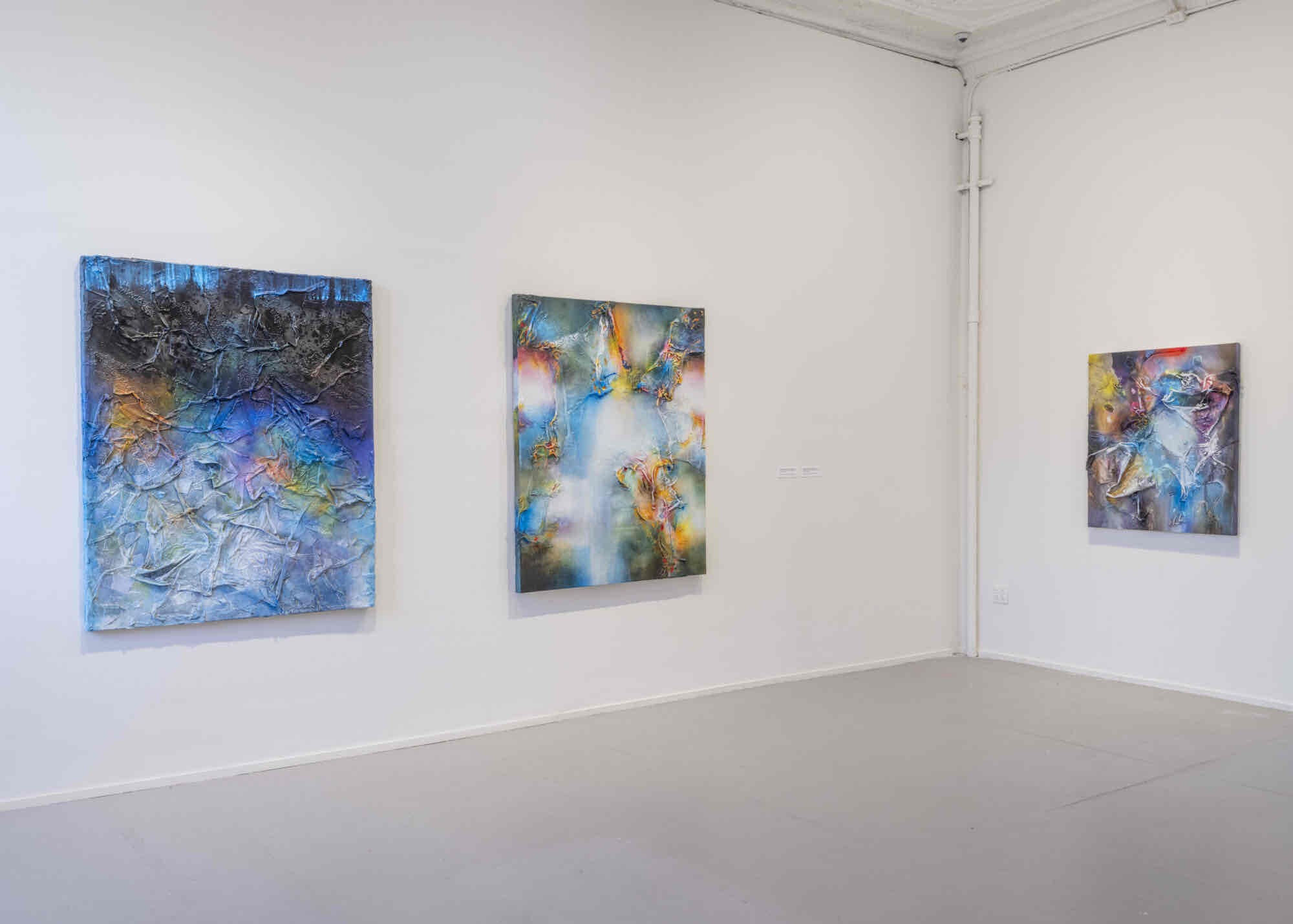
Installation view, Leslie Martinez: The Fault of Formation, on view at MoMA PS1 from November 16, 2023 through April 8, 2024. Image courtesy MoMA PS1. Photo: Kris Graves
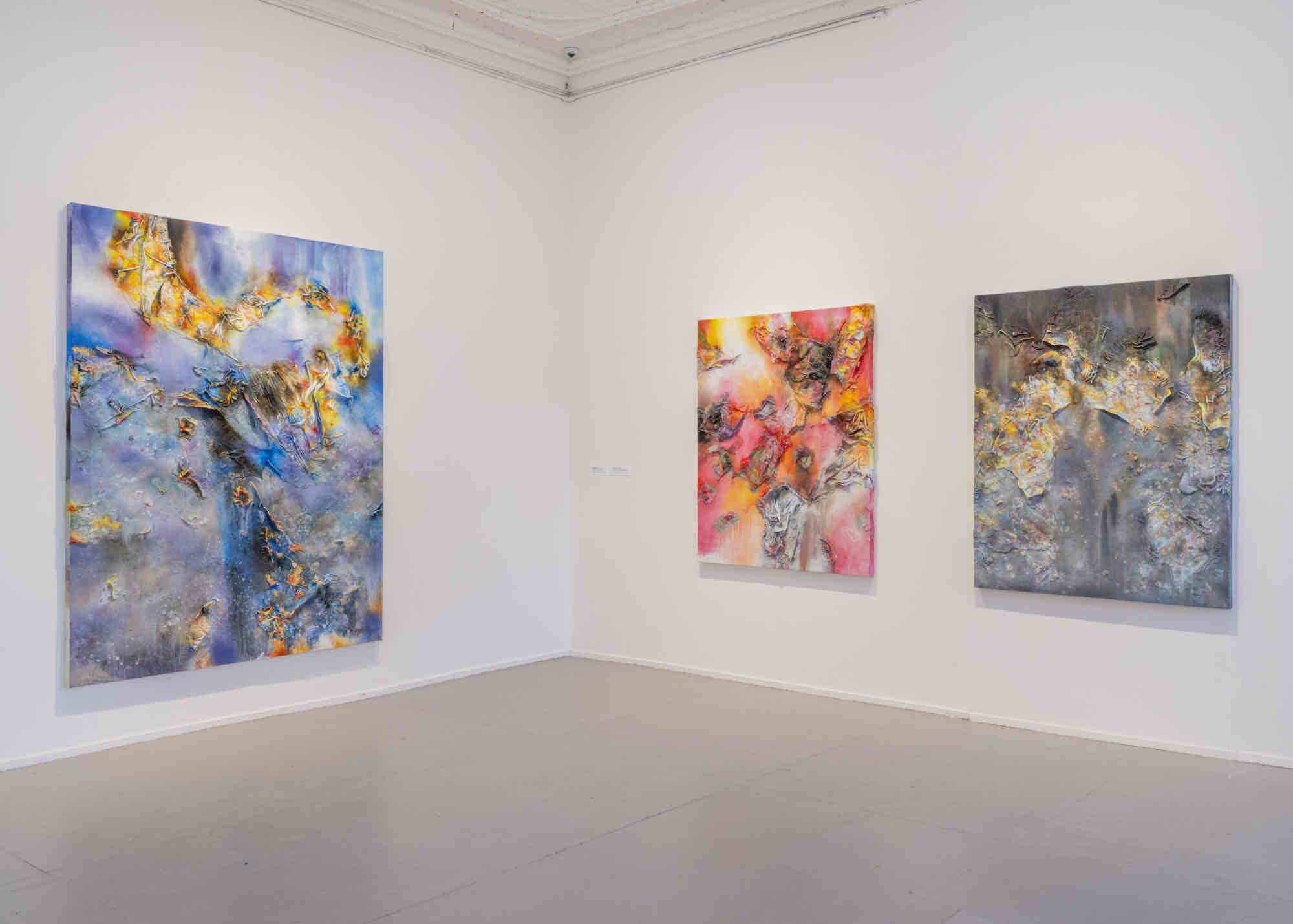
Installation view, Leslie Martinez: The Fault of Formation, on view at MoMA PS1 from November 16, 2023 through April 8, 2024. Image courtesy MoMA PS1. Photo: Kris Graves
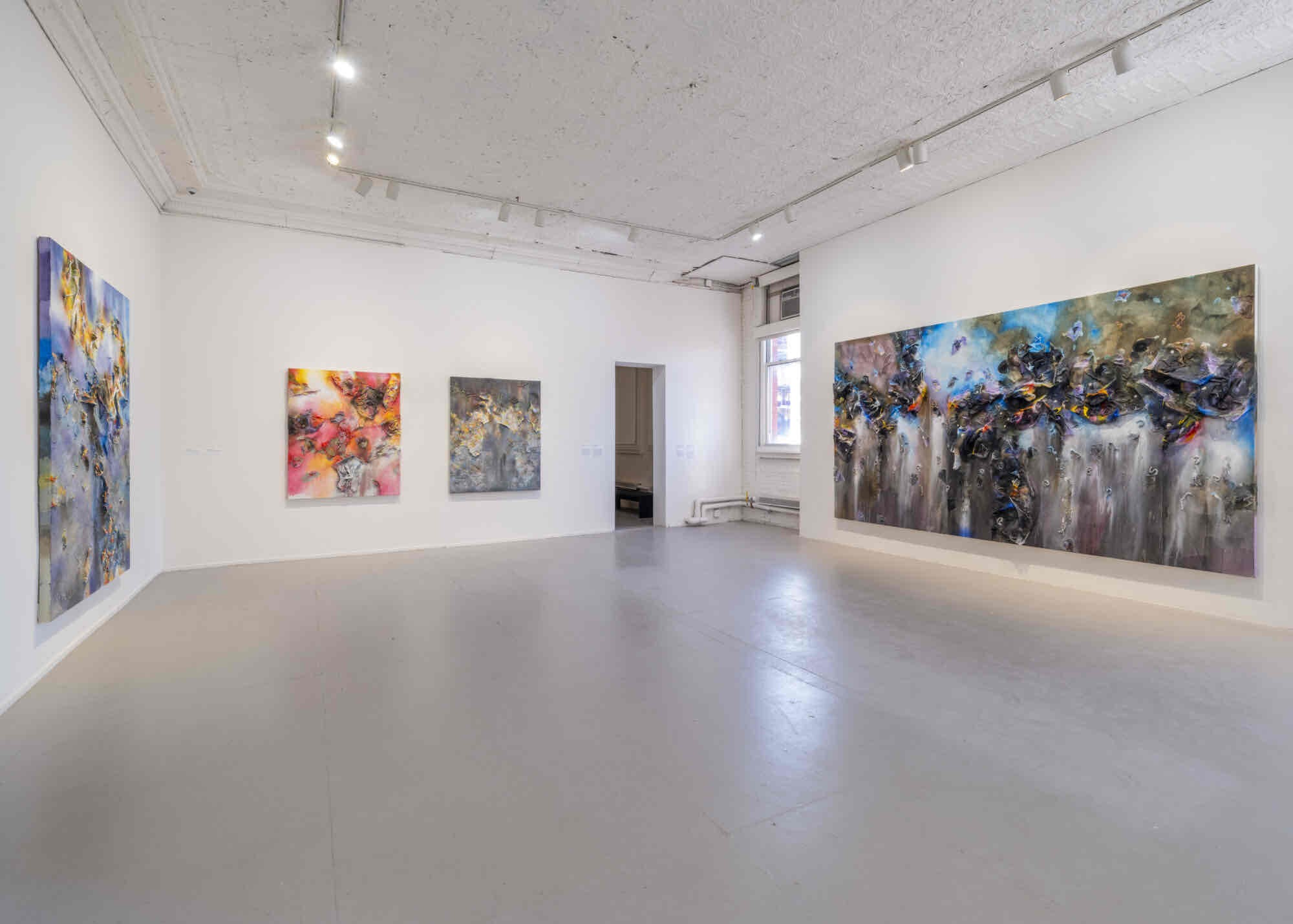
Installation view, Leslie Martinez: The Fault of Formation, on view at MoMA PS1 from November 16, 2023 through April 8, 2024. Image courtesy MoMA PS1. Photo: Kris Graves

Leslie Martinez. The Reconstitution of Rejected and Refracted Voids (detail). 2023. Acrylic, sumi ink, used studio rags, canvas scraps, used studio clothing, plastic film stuffing, polyester sewing threads, paper fragments, mylar balloons, iron silicate, iridescent cellophane, crushed charcoal, paint chips, saw dust, pumice, modeling paste, mica flakes, mica powder, and iron oxide on canvas. Image courtesy MoMA PS1. Photo: Kris Graves
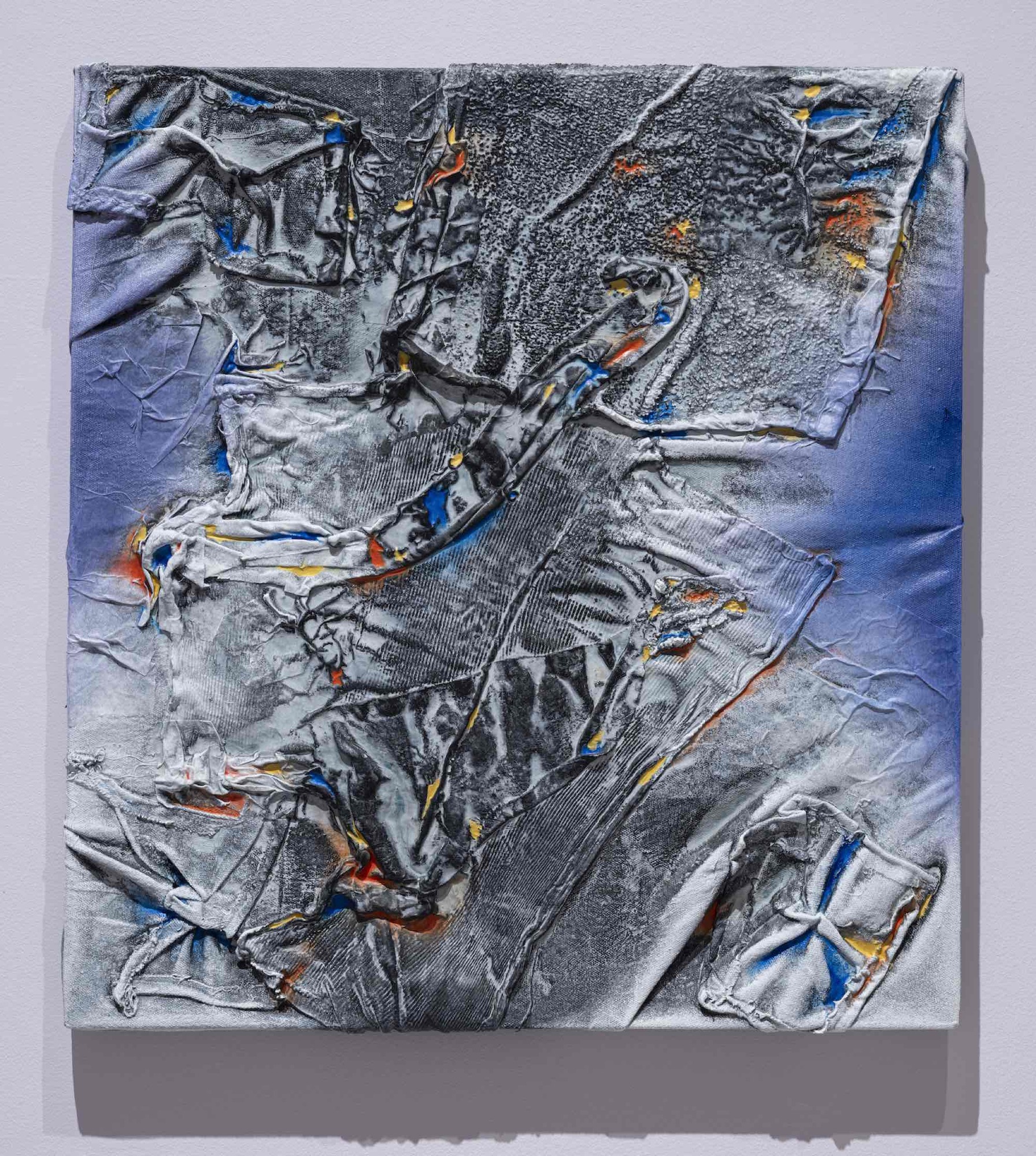
Leslie Martinez. Untitled. 2021. Acrylic, fabric, paper, fine ballast, pumice, and iron oxide on canvas. Image courtesy MoMA PS1. Photo: Kris Graves
On view from November 16, 2023 through April 8, 2024, the presentation will debut new and recent works by Martinez, who lived in New York City for fifteen years before returning to Texas in 2019. The exhibition showcases a selection of paintings that range in scale and burst with color, alongside a new series that explores the politics and poetics of the color gray as a boundless state of possibility.
Using a cosmic palette based on the CMYK (Cyan, Magenta, Yellow, and Black) color model, Martinez dyes and pleats canvases of pooled paint, an approach that explores place and ancestry in relation to the handmade and draws on formal legacies of abstraction. Born in the Rio Grande Valley near the US-Mexico border, Martinez wields an embodied way of painting that resists colonial notions of “good taste” and instead embraces the concept of rasquachismo, a resourcefulness embraced out of necessity. Martinez builds on and celebrates generational practices of survival and sustenance learned from their family—who have lived in Texas for generations and worked as farmers, ranchers, seamstresses, and construction workers—by implicating their labor and pride in craft through corporeal paintings brimming with gestural mark making.
Both alluring and abject, the works incorporate remains from the studio—including rags and dried acrylics—combining a no-waste approach with methodologies of rasquachismo. Transforming common and often discarded objects into dynamic compositions, Martinez’s paintings reject disposability and invoke a politics of care—one that embraces histories of painting, labor, queerness, and refusal—defying borders and categorization.
The exhibition is organized by Elena Ketelsen González, Assistant Curator, MoMA PS1.
Using a cosmic palette based on the CMYK (Cyan, Magenta, Yellow, and Black) color model, Martinez dyes and pleats canvases of pooled paint, an approach that explores place and ancestry in relation to the handmade and draws on formal legacies of abstraction. Born in the Rio Grande Valley near the US-Mexico border, Martinez wields an embodied way of painting that resists colonial notions of “good taste” and instead embraces the concept of rasquachismo, a resourcefulness embraced out of necessity. Martinez builds on and celebrates generational practices of survival and sustenance learned from their family—who have lived in Texas for generations and worked as farmers, ranchers, seamstresses, and construction workers—by implicating their labor and pride in craft through corporeal paintings brimming with gestural mark making.
Both alluring and abject, the works incorporate remains from the studio—including rags and dried acrylics—combining a no-waste approach with methodologies of rasquachismo. Transforming common and often discarded objects into dynamic compositions, Martinez’s paintings reject disposability and invoke a politics of care—one that embraces histories of painting, labor, queerness, and refusal—defying borders and categorization.
The exhibition is organized by Elena Ketelsen González, Assistant Curator, MoMA PS1.
